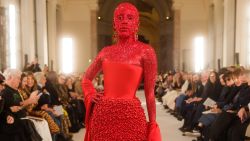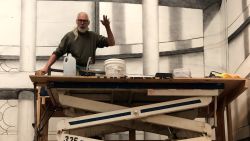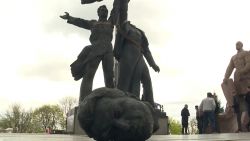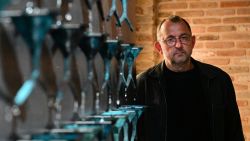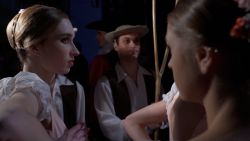Story highlights
Catherine Opie is an American photographer living in Los Angeles
Opie was given full-access to Elizabeth Taylor's home, 700 Nimes Road to create an indirect portrait
Taylor passed away during the project but Opie continued her work, creating an intimate and poignant portfolio of images
Self-portrait ‘Pervert’ was possibly Catherine Opie’s most angry piece. In the photograph, Opie sits, bare-chested, facing the camera with the word pervert slashed into her upper body. Her arms are punctured with nails (46 of them) and her face is masked with a skin-tight black leather hood.
She took the photo in 1994 when she was “very, very concerned” with the first gay and lesbian march on Washington. According to Opie, there was a division between the leather community and the gay and lesbian community who claimed to be “more normal.” And by saying they were normal, “they had created this binary of abnormal,” she said.
“That is what pushed me to make that piece,” said Opie, “It was like, ‘OK I’m wearing the language that you’re calling me on my body and I’m just going to sit here like Henry VIII in Hans Holbein’s paintings and that’s what you’re going to have to deal with. Think about Holbein and you’re going to have to think about this image’.”
The image was a double edged sword. Not only because it made conversations with her family challenging (at one point her sister in law refused to let her see her niece), but because it is perpetually referenced.
There’s nothing queer about ‘Freeways’
While a lot of emphasis is put on Opie’s queer portraits, she’s a photographer with impressive range. Her abstract landscapes, profiles of American footballers, snowy ice huts, concrete freeways and the photos from President Obama’s first inauguration prove this.
While her work centering on the LGBTQ community is prominent, Opie doesn’t think it should not define her as an artist: “I remember someone called ‘Freeways’ queer work, and I was like, ‘there’s nothing queer about ‘Freeways’,” she said by way of an example.
Elizabeth Taylor
Opie’s more recent project, 700 Nimes Road, feels very far removed from “Pervert.” It is an intimate portrait of Elizabeth Taylor. The twist? Taylor does not feature in a single photo.
Catherine Opie: From Pervert to Elizabeth Taylor and the 'queer' freeways in between
By way of their mutual accountant, Opie was offered exclusive access to Taylor’s LA home months before her death. At the time she wasn’t expecting Taylor to die midway through the project but when she did, Opie continued with her work, photographing her home as it was slowly deconstructed.
What links the Elizabeth Taylor series with Opie’s earlier work? The theme of visibility for starters. Opie wanted to make herself and her community known: “I’ve never backed down, even in terms of my own fear and my own internal homophobia. So there was a lot of struggle on by behalf – being in that fight for visibility, but it was crucial on the heel of watching my community be decimated in terms of AIDs.”
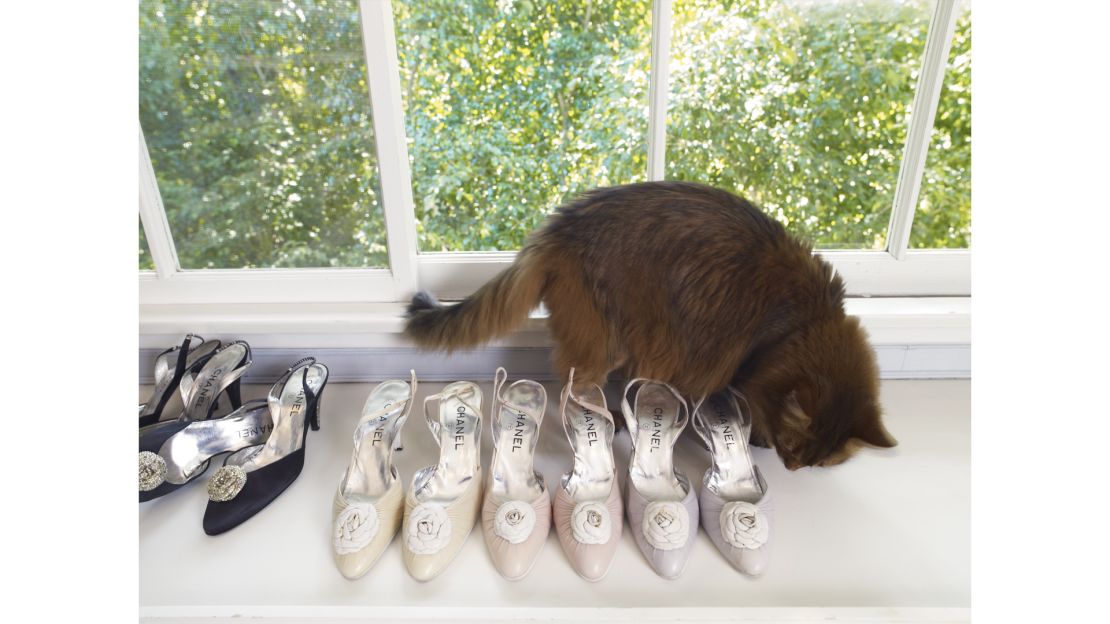
As it happens, Taylor was the first person to make Ronald Reagan talk about AIDs. “Elizabeth Taylor was huge in terms of the support she gave early on in researching a cure or any kind of treatment.
So I liked that. It was like a continuation of that thread of thinking and being aware of what it meant to be visible in that time. And of course Elizabeth Taylor is utterly visible.”
The provocateur with a conscience
While Opie admits, she likes to be a provocateur, she’s also just as willing to confess that she hasn’t found it easy to create her more challenging work. Her attitude is less punk-spirited than some of her photos may lead you to believe.
She recalls being scared of meeting her wife Julie’s family for the first time. “I was like ‘please God don’t let them Google me’ – you know? How do I explain myself to them? So yeah, there’s that awkwardness, you’re perpetually having to come out.”
When her work went on display at the 1995 Whitney Biennial, Opie remembers having to prep her parents ahead of time: “I remember going home and showing them before and sitting with them and explaining to them what my life was really like and what I was doing. I didn’t want them to show up at Whitney museum of American art and all of sudden not know who their daughter was.”
The work doesn’t stare at you, you stare at it
Opie’s upcoming series of portraits that are due to go on display at the Hammer in January focus predominantly on her artist friends including Glenn Ligon, John Baldessari and author Jonathan Franzen. She’s trying for Joan Didion because she’s “one of my biggest heros,” she said.
The work is familiar but it also feels different. Less about projection but rather reflection. “They’re coming out of black,” said Opie, “It’s like a figure emerging from your subconscious… So they’re meant to be stared at. This body of work doesn’t stare at you, you stare at it and that’s a little bit different for me as well.”
Catherine Opie
January 14–February 27, 2016
Lehmann Maupin, New York
Catherine Opie: 700 Nimes Road
January 23–May 8, 2016


